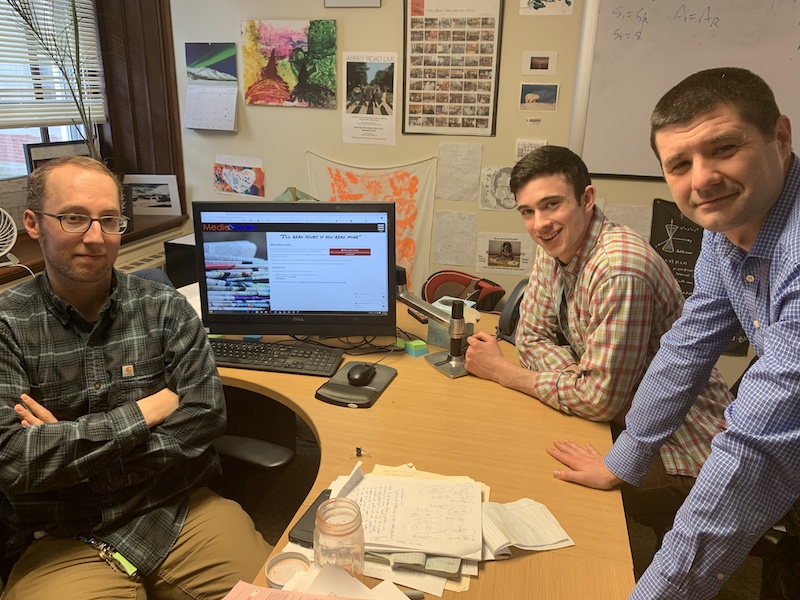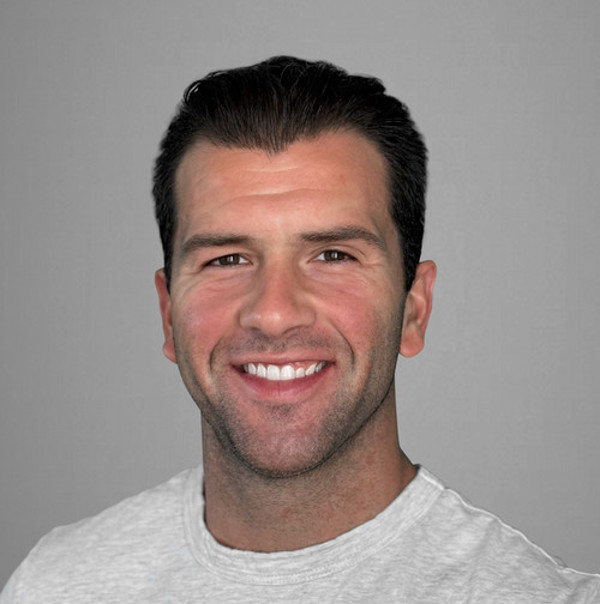Bowdoin Team Launches Online Tool to Bridge Media and Political Divide
By Rebecca Goldfine
This fall, the group began building Media Trades, an application that went live in early January. Media Trades, which is free and open to anyone, is designed to tackle one of the most persistent and troubling trends of the digital age: the splintering of media—and media users—into opposing sides.
"We have this echo chamber problem; people mostly get news from like-minded sources," Stone said. "So we tend to be unaware of arguments or facts that are inconsistent with our political preference. We only get one side of the story and then we get worked up about how unjust and outrageous political events or processes are."
And when people become emotionally inflamed, they don't just tend to disagree with those who think differently, they can become angry and hostile. "Sometimes these injustices are, of course, real and reactions are very appropriate, but sometimes having a better understanding can calm tempers," Stone said.
When Stone told him about the concept for Media Trades last fall, Harrower said he jumped at the chance to work on it for an honors project. Though his contributions will garner him academic credit and a grade, Harrower said he's also excited by the potential real-world impacts of the project. "This isn't just an academic pursuit," he said. "It really deals with issues we're facing now. It's an exciting chance to get people talking and to break down barriers."
While its goals of helping sow greater political understanding are lofty, Media Trades itself is relatively straightforward and easy to use. After creating an account, participants must self-identify as leaning left or leaning right. They then can select articles—from a set list of over 600 sources—to share with those who have identified as coming from the other end of the political spectrum. (If users wish to share an article from a news source outside of this list, they can make a pitch for it on the website that Stone and Francis will assess.)
Media Trades randomly pairs up one user from each side who has submitted an article to share. Once users receive an article or video, they must commit to reading or watching it within twenty-four hours—and prove they did so by summarizing its main points. If participants also wish to share opinionated feedback they may, but this is optional. Users rate each other’s reviews thumbs up/thumbs down, and these ratings affect prioritization for future trades.
Jackson Harrower ’20 is one of twenty students who have a Grua/O'Connell Research Award this year to support honors projects and independent studies. Each fall, the College awards grants for up to $2,000 to students involved in faculty-mentored research. Many use the funds to travel or to buy books and equipment.
Harrower is using his funding to look at the effects of social media advertising on the reach of Media Trades. He'll analyze what types of marketing works to reach which types of populations over what timeframes.
The core skills he's gaining from the project complement his liberal arts education, he said. "More importantly than any technical skill, I'm learning how to learn. I'm learning how to create something I've never created before and to spread awareness and create change about something that matters to me in the world. It's all about thinking dynamically and learning as I work."
Stone has once before tried another experiment to encourage people to engage with different political beliefs. In 2017, he worked with a group at Bowdoin to launch a one-month Polar Bear Purple Media Plunge, which challenged volunteers to read a news source that didn't reflect their political values. The results from that, in which participants reported feeling less hostile to the other side, encouraged him to keep working on the problem.
But he knew that a bipartisan news tool, if it were to conjure greater engagement from more people, had to have the right incentive.
And he and his collaborators think that Media Trades has a compelling one, perhaps one even more powerful than money. For not only does it present a fair approach—i.e. if you expose yourself to the other side's media, they must also expose themselves to yours—but it also gives people "a chance to teach the other side a lesson, of educating people," Stone said.
And that may be hard to resist. Then the team hopes that once people start using Media Trades, they might also start looking more favorably at diverse news sources and bipartisan cooperation.
"What has fast-tracked a lot of political polarization is that with social media, you can quickly spew something out of context and get people upset," Francis said. On the other hand, Media Trades offers a counterbalance: it asks people to spend a bit more time reading and digesting someone else's viewpoint.
"And almost any time you take the time to listen to someone, you realize you understand a little bit better where they're coming from, even if you don't agree with them," he added.
Stone says Francis's idea is supported by research. "After seeing the other side's point of view, you might not agree, but you might be less likely to think they're crazy and evil," he said. "It helps you to understand how and why they think what they do, and that can make you more empathetic."
View coverage of Media Trades by WGME/CBS 13 and in the Bangor Daily News.



